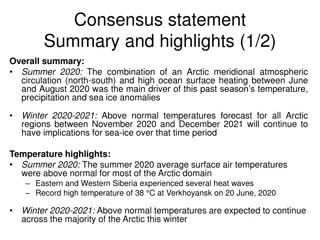
Cams and Followers in Machinery
Explore the concept of cams and followers, essential elements in machinery, their classifications, and the motion of followers. Learn about radial cams, terms used, and follower motions like uniform velocity and simple harmonic motion.
Download Presentation

Please find below an Image/Link to download the presentation.
The content on the website is provided AS IS for your information and personal use only. It may not be sold, licensed, or shared on other websites without obtaining consent from the author. If you encounter any issues during the download, it is possible that the publisher has removed the file from their server.
You are allowed to download the files provided on this website for personal or commercial use, subject to the condition that they are used lawfully. All files are the property of their respective owners.
The content on the website is provided AS IS for your information and personal use only. It may not be sold, licensed, or shared on other websites without obtaining consent from the author.
E N D
Presentation Transcript
SECOND SEMESTER CHAPTER FIVE Cams Dr. Adil ABed Nayeeif 2019-2020
Introduction A cam is a rotating machine element which gives reciprocating or oscillating motion to another element known as follower. The cam and the follower have a line contact and constitute a higher pair. The cams are usually rotated at uniform speed by a shaft, but the follower motion is predetermined and will be according to the shape of the cam. The cam and follower is one of the simplest as well as one of the most important mechanisms found in modern machinery today. The cams are widely used for operating the inlet and exhaust valves of internal combustion engines, automatic attachment of machineries, paper cutting machines, spinning and weaving textile machineries, feed mechanism of automatic lathes etc.
Classification of Followers The followers may be classified as discussed below : 1. According to the surface in contact. The followers, according to the surface in contact, are as follows :
2. According to the motion of the follower. The followers, according to its motion, are of the following two types: (a) Reciprocating or translating follower. When the follower reciprocates in guides as the cam rotates uniformly, it is known as reciprocating or translating follower. The followers as shown in Figure (a) to (d) are all reciprocating or translating followers. (b) Oscillating or rotating follower. When the uniform rotary motion of the cam is converted into predetermined oscillatory motion of the follower, it is called oscillating or rotating follower. The follower, as shown in Figure (e), is an oscillating or rotating follower. 3. According to the path of motion of the follower. The followers, according to its path of motion, are of the following two types: (a) Radial follower. When the motion of the follower is along an axis passing through the centre of the cam, it is known as radial follower. The followers, as shown in Figure (a) to (e), are all radial followers. (b) Off-set follower. When the motion of the follower is along an axis away from the axis of the cam centre, it is called off-set follower. The follower, as shown in Figure ( f ), is an off-set follower
Terms Used in Radial Cams Figure shows a radial cam with reciprocating roller follower. The following terms are important in order to draw the cam profile.
Motion of the Follower The follower, during its travel, may have one of the following motions. 1. Uniform velocity, 2. Simple harmonic motion, 3. Uniform acceleration and retardation, and 4. Cycloidal motion. Diagrams when the Follower Moves with Uniform Velocity
Diagrams when the Follower Moves with Simple Harmonic Motion
Diagrams when the Follower Moves with Uniform Acceleration and Retardation
EXAMPLES Exam1. A cam is to give the following motion to a knife-edged follower : 1. Outstroke during 60 of cam rotation ; 2. Dwell for the next 30 of cam rotation ; 3. Return stroke during next 60 of cam rotation, and 4. Dwell for the remaining 210 of cam rotation. The stroke of the follower is 40 mm and the minimum radius of the cam is 50 mm. The follower moves with uniform velocity during both the outstroke and return strokes. Draw the profile of the cam when (a) the axis of the follower passes through the axis of the cam shaft, and (b) the axis of the follower is offset by 20 mm from the axis of the cam shaft.
(a) Profile of the cam when the axis of follower passes through the axis of cam shaft
(b) Profile of the cam when the axis of the follower is offset by 20 mm from the axis of the cam shaft
Exam(2) A cam, with a minimum radius of 25 mm, rotating clockwise at a uniform speed is to be designed to give a roller follower, at the end of a valve rod, motion described below : 1. To raise the valve through 50 mm during 120 rotation of the cam ; 2. To keep the valve fully raised through next 30 ; 3. To lower the valve during next 60 ; and 4. To keep the valve closed during rest of the revolution i.e. 150 ; The diameter of the roller is 20 mm and the diameter of the cam shaft is 25 mm. Draw the profile of the cam when (a) the line of stroke of the valve rod passes through the axis of the cam shaft, and (b) the line of the stroke is offset 15 mm from the axis of the cam shaft.The displacement of the valve, while being raised and lowered, is to take place with simple harmonic motion.
Exam( 3) Draw the profile of the cam when the roller follower moves with cycloidal motion during out stroke and return stroke, as given below : 1. Out stroke with maximum displacement of 31.4 mm during 180 of cam rotation,2. Return stroke for the next 150 of cam rotation, 3. Dwell for the remaining 30 of cam rotation. The minimum radius of the cam is 15 mm and the roller diameter of the follower is 10 mm.The axis of the roller follower is offset by 10 mm towards right from the axis of cam shaft.
Exam(4) It is required to set out the profile of a cam to give the following motion to the reciprocating follower with a flat mushroom contact face : (i) Follower to have a stroke of 20 mm during 120 of cam rotation ; (ii) Follower to dwell for 30 of cam rotation ; (iii) Follower to return to its initial position during 120 of cam rotation ; and (iv) Follower to dwell for remaining 90 of cam rotation. The minimum radius of the cam is 25 mm. The out stroke of the follower is performed with simple harmonic motion and the return stroke with equal uniform acceleration and retardation.








